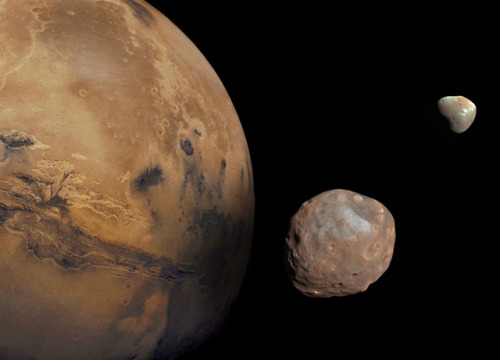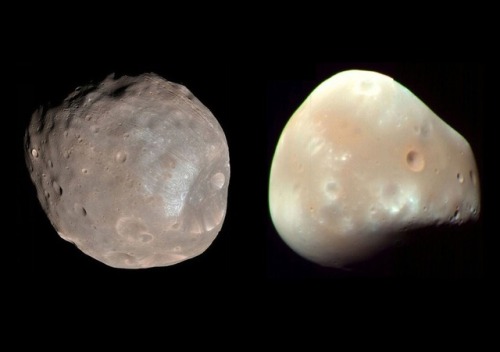(Source)










(Source)
More Posts from Ocrim1967 and Others










Happy 230th Birthday, Enceladus, Our Solar System’s Greatest Hope For Life Beyond Earth
“It is still a complete unknown whether Earth is the only world in the Solar System to house any form of life: past or present. Venus and Mars may have been Earth-like for a billion years or more, and life could have arisen there early on. Frozen worlds with subsurface oceans, like Enceladus, Europa, Triton or Pluto, are completely different from Earth’s present environment, but have the same raw ingredients that could potentially lead to life as well.
Are water, energy, and the right molecules all we need for life to arise? Finding even the most basic organisms (or even the precursor components of organisms) anyplace else in the Universe would lead to a scientific revolution. A single discovered cell in the geysers of Enceladus would be the most momentous discovery of the 21st century. With the recent demise of Cassini, on the 230th anniversary of Enceladus’ discovery, the possibility of finding the incredible compels us to go back. May we be bold enough to make it so.”
On this date in 1789, William Herschel, armed with the most powerful telescope known to humanity at the time (you can get a lot of grant money when you discover the planet Uranus and name it after the King), discovered a relatively small moon of Saturn just 500 kilometers across: Enceladus. For some 200 years, Enceladus was never seen as more than a single pixel across, until the Voyager probes flew by it. What they revealed was a remarkable, unique world in all the Solar System. Now that the Cassini mission is complete, we can look back at all we know about this world, and all the signs point to a remarkable story: there’s a subsurface ocean, possibly suitable as a home for undersea life.
Is Enceladus truly our Solar System’s best hope for life beyond Earth? That’s debatable, but there’s every reason to be hopeful. Come get the story here.



In 40 million years, Mars may have a ring (and one fewer moon)
Nothing lasts forever - especially Phobos, one of the two small moons orbiting Mars. The moonlet is spiraling closer and closer to the Red Planet on its way toward an inevitable collision with its host. But a new study suggests that pieces of Phobos will get a second life as a ring around the rocky planet.
A moon - or moonlet - in orbit around a planet has three possible destinies. If it is just the right distance from its host, it will stay in orbit indefinitely. If it’s beyond that point of equilibrium, it will slowly drift away. (This is the situation with the moon; as it gradually pulls away from Earth, its orbit is growing by about 1.5 inches per year.) And if a moon starts out on the too-close side, its orbit will keep shrinking until there is no distance left between it and its host planet. The Martian ring will last for at least 1 million years - and perhaps for as long as 100 million years, according to the study.
The rest of Phobos will probably remain intact, until it hits the Martian surface. But it won’t be a direct impact; instead, the moonlet’s remains will strike at an oblique angle, skipping along the surface like a smooth stone on a calm lake.
This has probably happened before - scientists believe a group of elliptical craters on the Martian surface were caused by a small moon that skidded to its demise. (If this were to happen on Earth, our planet’s greater mass would produce a crash as big as the one that wiped out the dinosaurs, the researchers noted as an aside.)
source
images: NASA/JPL, Tushar Mittal using Celestia 2001-2010, Celestia Development Team.
Sixty Years of Exploration, Innovation, and Discovery!

Exactly sixty years ago today, we opened our doors for the first time. And since then, we have opened up a universe of discovery and innovation.
There are so many achievements to celebrate from the past six decades, there’s no way we can go through all of them. If you want to dive deeper into our history of exploration, check out NASA: 60 Years and Counting.
In the meantime, take a moonwalk down memory lane with us while we remember a few of our most important accomplishments from the past sixty years!

In 1958, President Eisenhower signed the National Aeronautics and Space Act, which effectively created our agency. We officially opened for business on October 1.
To learn more about the start of our space program, watch our video: How It All Began.

Alongside the U.S. Air Force, we implemented the X-15 hypersonic aircraft during the 1950s and 1960s to improve aircraft and spacecraft.
The X-15 is capable of speeds exceeding Mach 6 (4,500 mph) at altitudes of 67 miles, reaching the very edge of space.
Dubbed the “finest and most productive research aircraft ever seen,” the X-15 was officially retired on October 24, 1968. The information collected by the X-15 contributed to the development of the Mercury, Gemini, Apollo, and Space Shuttle programs.
To learn more about how we have revolutionized aeronautics, watch our Leading Edge of Flight video.

On July 20, 1969, Neil Armstrong and Buzz Aldrin became the first humans to walk on the moon. The crew of Apollo 11 had the distinction of completing the first return of soil and rock samples from beyond Earth.
Astronaut Gene Cernan, during Apollo 17, was the last person to have walked on the surface of the moon. (For now!)
The Lunar Roving Vehicle was a battery-powered rover that the astronauts used during the last three Apollo missions.
To learn more about other types of technology that we have either invented or improved, watch our video: Trailblazing Technology.

Our long-term Earth-observing satellite program began on July 23, 1972 with the launch of Landsat 1, the first in a long series (Landsat 9 is expected to launch in 2020!) We work directly with the U.S. Geological Survey to use Landsat to monitor and manage resources such as food, water, and forests.
Landsat data is one of many tools that help us observe in immense detail how our planet is changing. From algae blooms to melting glaciers to hurricane flooding, Landsat is there to help us understand our own planet better.
Off the Earth, for the Earth.
To learn more about how we contribute to the Earth sciences, watch our video: Home, Sweet Home.

Space Transportation System-1, or STS-1, was the first orbital spaceflight of our Space Shuttle program.
The first orbiter, Columbia, launched on April 12, 1981. Over the next thirty years, Challenger, Discovery, Atlantis, and Endeavour would be added to the space shuttle fleet.
Together, they flew 135 missions and carried 355 people into space using the first reusable spacecraft.

On January 16, 1978, we selected a class of 35 new astronauts–including the first women and African-American astronauts.
And on June 18, 1983, Sally Ride became the first American woman to enter space on board Challenger for STS-7.
To learn more about our astronauts, then and now, watch our Humans in Space video.

Everybody loves Hubble! The Hubble Space Telescope was launched into orbit on April 24, 1990, and has been blowing our minds ever since.
Hubble has not only captured stunning views of our distant stars and galaxies, but has also been there for once-in-a-lifetime cosmic events. For example, on January 6, 2010, Hubble captured what appeared to be a head-on collision between two asteroids–something no one has ever seen before.
In this image, Hubble captures the Carina Nebula illuminating a three-light-year tall pillar of gas and dust.
To learn more about how we have contributed to our understanding of the solar system and beyond, watch our video: What’s Out There?

Cooperation to build the International Space Station began in 1993 between the United States, Russia, Japan, and Canada.
The dream was fully realized on November 2, 2000, when Expedition 1 crew members boarded the station, signifying humanity’s permanent presence in space!
Although the orbiting lab was only a couple of modules then, it has grown tremendously since then!
To learn more about what’s happening on the orbiting outpost today, visit the Space Station page.

We have satellites in the sky, humans in orbit, and rovers on Mars. Very soon, we will be returning humankind to the Moon, and using it as a platform to travel to Mars and beyond.
And most importantly, we bring the universe to you.
What are your favorite NASA moments? We were only able to share a few of ours here, but if you want to learn about more important NASA milestones, check out 60 Moments in NASA History or our video, 60 Years in 60 Seconds.
Make sure to follow us on Tumblr for your regular dose of space: http://nasa.tumblr.com.




Ψ ♥ For more interesting psychology posts like this, follow @mypsychology ♥ Ψ










It’s International Asteroid Day!
(Large Asteroid Impact Simulation)
Asteroid Day (also known as International Asteroid Day) is an annual global event that aims to raise awareness about asteroids and what can be done to protect the Earth, its families, communities, and future generations. Asteroid Day is held on the anniversary of the June 30, 1908 Siberian Tunguska event, the most harmful known asteroid-related event on Earth in recent history.
Learn more here
Animation









this cat is so cute










(Source)





Read Full Article Here: 6 Tricks to Staying Positive - Psych2Go
Follow @psych2go for more
I love flowers 💐❤️















-
 willowwispmeadow liked this · 5 months ago
willowwispmeadow liked this · 5 months ago -
 hanzeel liked this · 6 months ago
hanzeel liked this · 6 months ago -
 kosyrev liked this · 6 months ago
kosyrev liked this · 6 months ago -
 anna15ion liked this · 7 months ago
anna15ion liked this · 7 months ago -
 s71n liked this · 8 months ago
s71n liked this · 8 months ago -
 achildofprophecy liked this · 11 months ago
achildofprophecy liked this · 11 months ago -
 thehottsam liked this · 1 year ago
thehottsam liked this · 1 year ago -
 starlaviniacolor liked this · 1 year ago
starlaviniacolor liked this · 1 year ago -
 justremainingmyself liked this · 1 year ago
justremainingmyself liked this · 1 year ago -
 unprojects liked this · 1 year ago
unprojects liked this · 1 year ago -
 riapertozeta liked this · 1 year ago
riapertozeta liked this · 1 year ago -
 neypagasembve liked this · 1 year ago
neypagasembve liked this · 1 year ago -
 vamosmicire liked this · 1 year ago
vamosmicire liked this · 1 year ago -
 cohesin liked this · 1 year ago
cohesin liked this · 1 year ago -
 lowamorga liked this · 1 year ago
lowamorga liked this · 1 year ago -
 tiremedou liked this · 1 year ago
tiremedou liked this · 1 year ago -
 compressionerrors liked this · 1 year ago
compressionerrors liked this · 1 year ago